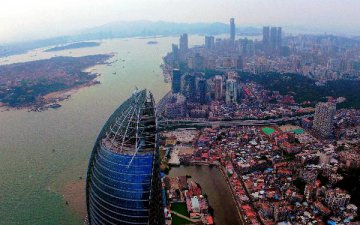BEIJING, July 3 (Xinhua) -- China's industrial structure has been constantly improved over the past seven decades, turning from relying mainly on the primary industry to manufacturing and service sectors taking up the majority share, according to a report from National Bureau of Statistics (NBS).
In 1952, the added value of the primary, secondary and tertiary industries accounted for 50.5 percent, 20.8 percent and 28.7 percent of the country's gross domestic product.
However, the proportions of primary and secondary industries dropped to 7.2 percent and 40.7 percent respectively in 2018, while the tertiary sector's ratio increased to 52.2 percent.
China has made huge strides in developing its agricultural sector. The country's total grain output increased from 113.18 million tonnes in 1949 to 657.89 million tonnes in 2018, which ensured China's food security.
The industrial sector also evolved. It was homogeneous in the early 1950s, with only mining, textile and simple processing industries. China relied on imports for supplies of a large number of industrial products at that time. In contrast, China now possesses all the industrial categories in the United Nations industrial classification. The outputs of more than 200 industrial products rank first in the world, and the added value of China's manufacturing sector has also topped the world since 2010.
The service sector has been booming over the past seven decades. Up to 2018, the added value of the tertiary industry reached 46.98 trillion yuan (about 6.9 trillion U.S. dollars), compared with 19.5 billion yuan in 1952. China's tertiary industry has become an important force in ensuring employment and stabilizing the economy, according to the report.




















Latest comments